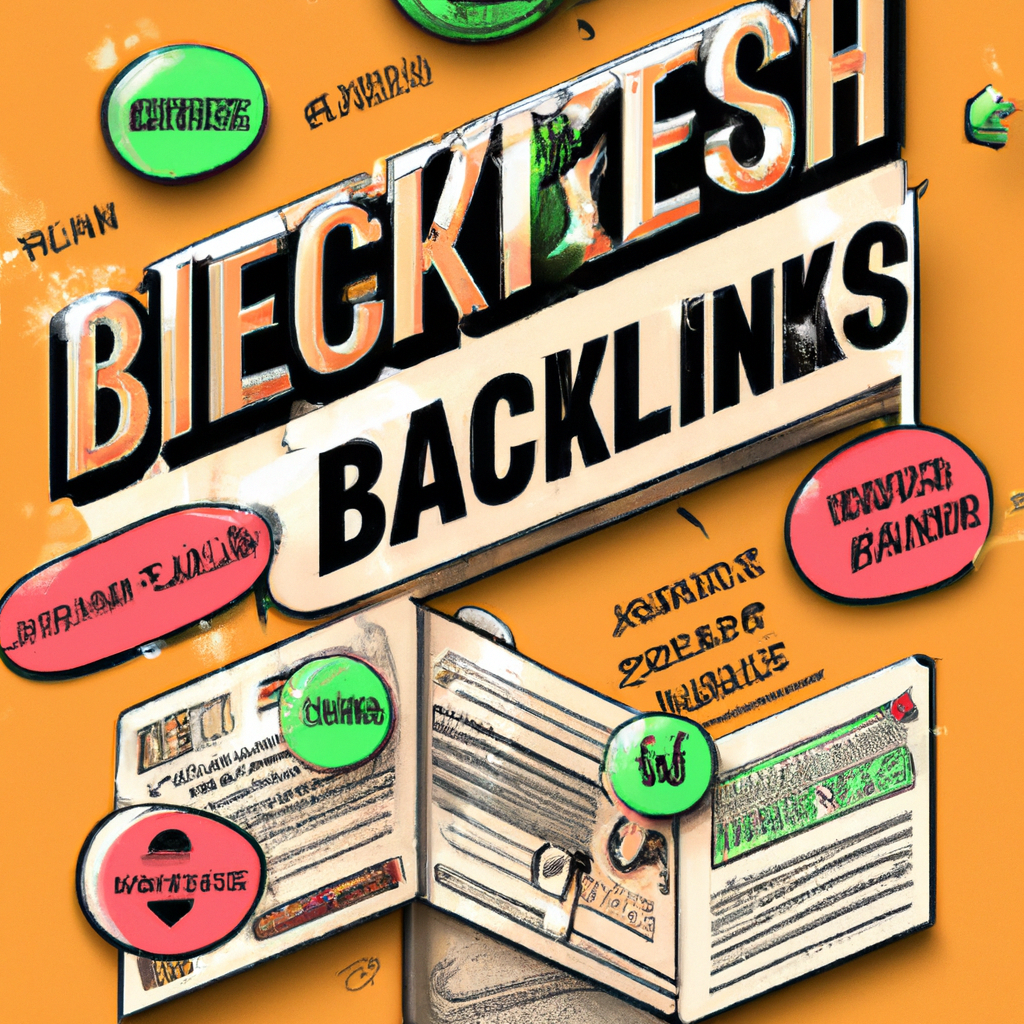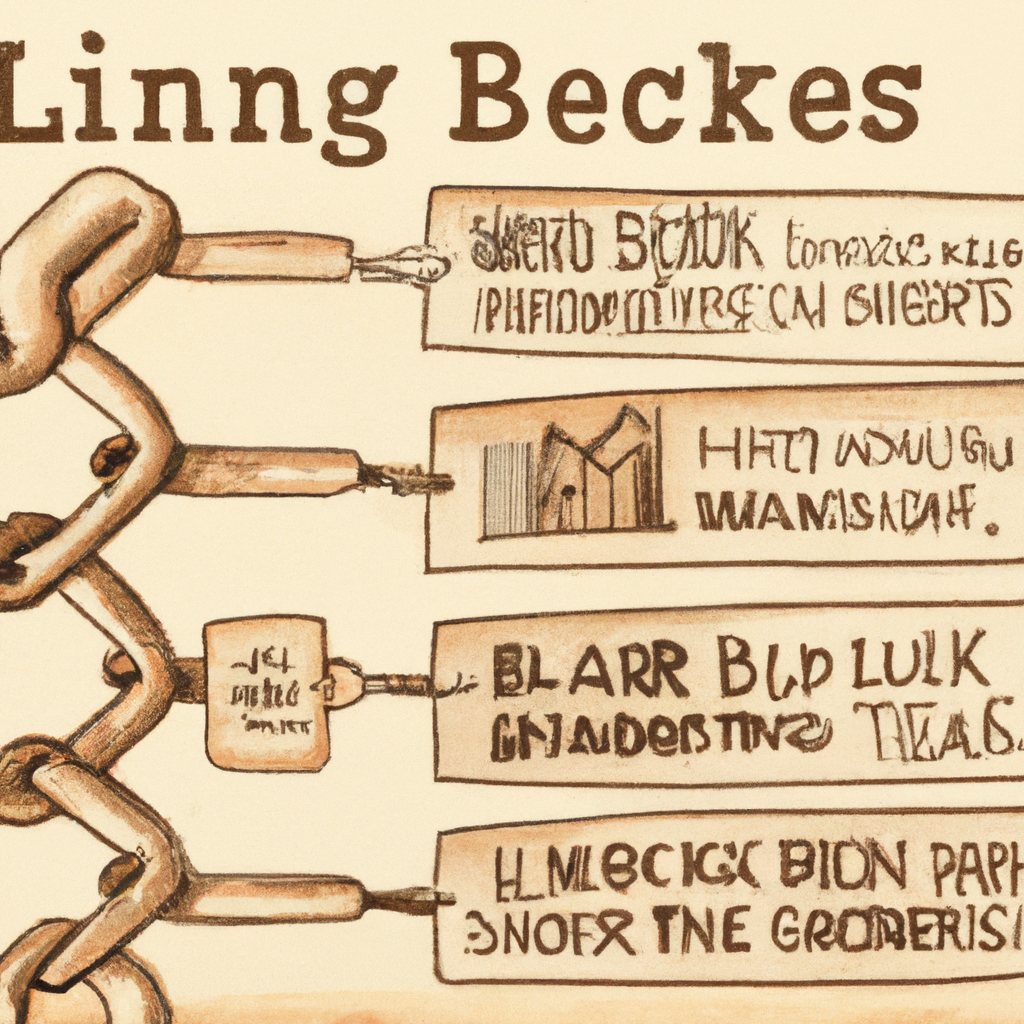How Linking to Your Blog Helps Product Pages
Key Takeaway:
- Internal linking is a crucial aspect of successful blogging for online marketing: Internal links connect different pages on the same website and help search engines understand the structure and content of your site. This is especially important for product pages to build a network of pages for search engines and customers to navigate through.
- Effective link building strategies for product pages include linking to content and informational pages, utilizing quality and relevant links, conducting a litmus test for link building tactics, and strategically featuring products in blogs. These methods not only boost search visibility but also improve customer engagement with the website.
- Featuring products in articles can be done effectively by linking to products and using call-out boxes, weaving links throughout the article, and adding lifestyle shots and captions with links. However, it is important to prioritize providing quality content over overt marketing tactics for long-term success in online marketing.
Introduction to Blogging for Online Marketing
Introducing the role of blogging in online marketing, we first need to understand the power of internal linking. Internal linking, defined as linking to other pages within your website, can greatly enhance the success of your blog. In this section, we’ll explore the importance of internal linking for successful blogging and how it can benefit your product pages in the process.
Definition of Internal Linking
Internal linking is a must for websites. It connects one page to other pages on the same website. It helps users navigate and find relevant content. Plus, it boosts SEO rankings. But, the links must be relevant and authoritative.
For eCommerce sites, strategic internal linking can improve customer engagement, SEO rankings and reduce bounce rates. It links product pages to content and informational pages. Quality is more important than quantity. And, link building tactics should bring value to users, not just marketing.
Businesses need to prioritize quality content and use effective internal linking tactics. Even your blog needs some self-love. So, use internal linking – it’s a powerful tool.
Importance of Internal Linking for Successful Blogging
Internal linking is crucial for successful blogging. By connecting various blog pages with internal links, users can navigate more easily and engage better with the website’s content. This leads to higher user satisfaction and engagement.
Not only that, but internal linking is also necessary to enhance website ranking and optimization. Search engines use internal links to understand a website’s hierarchy and give more value to pages that are linked to more. By strategically linking relevant content and info pages in a blog, its authority and credibility in its niche is reinforced.
In eCommerce websites, internal linking is especially important for featuring products in blogs. Proper internal links let customers easily explore various product offerings, thus boosting engagement and reducing bounce rates. It also enhances SEO performance – visitors and search engines have clear pathways to explore relevant content.
To sum up, internal links are essential for both blogging and eCommerce websites. Quality, relevant internal links throughout a site give users better navigation experiences while increasing website optimization and search visibility.
Strategies for Link Building for Product Pages
When it comes to link building for product pages, there are various strategies you can employ to improve your search visibility. In this section, we will explore the different tactics that can help you build quality links, including:
- Linking to content and informational pages
- Using relevant and authoritative sources
- Employing the litmus test for link building tactics
With the help of these strategies, you can improve your website’s online presence and drive more traffic to your product pages.
Linking to Content and Informational Pages
Internal linking plays a major role in successful blogging. Utilizing keywords to link to content and informational pages can dramatically increase website traffic and better user experience. Including applicable links to blog posts lets readers access more data connected to the topic, motivating them to remain on the site and possibly become customers.
To make sure of great link building, it is critical to guide links towards product pages that are pertinent and of top quality. This technique not only boosts search visibility, but also increases interaction by strategically placing call-out boxes in articles and adding lifestyle shots with suitable captions and links.
Moreover, internal linking is essential for eCommerce websites. By adding internal links in all articles and web copy, you can improve customer engagement and keep bounce rates low. Placing links to products in your blog smartly increases their visibility on the site and makes it easier for customers to explore and get more info about products they are interested in buying.
In conclusion, incorporating internal linking tactics such as linking to content and informational pages is key in improving website traffic, enhancing user experience, and advancing eCommerce website performance.
Quality and Relevant Links for Search Visibility
For higher search visibility, quality and relevant links are essential on your website. These links help search engines understand the content’s importance and give readers value by directing them to other helpful resources. To ensure quality and relevancy when building links, link to reputable sources or industry leaders. Avoid spammy or irrelevant websites as they can hurt your search engine rankings.
Also, use internal linking on your website. This strengthens the relevance of individual pages, boosting their chances of ranking higher. Quantity isn’t as important as the quality and relevancy of the links, for successful link building.
Don’t miss out on potential customers and SEO rankings. Take action now and watch your online presence grow. Pass the Link Building litmus test and see your website’s success skyrocket.
Litmus Test for Link Building Tactics
Link building is essential for successful blogging and online marketing. To assess the tactics used, apply a “litmus test“.
When linking product pages, consider the quality and relevance of the links. Ask yourself: does the link add value to users and their experience on the website? Internal linking is significant in eCommerce websites. It boosts SEO and decreases bounce rates, enhancing customer engagement. Incorporate links throughout articles or use call-out boxes with captions to feature products without overt marketing.
Pro Tip: Utilize the litmus test before implementing link building tactics. Ask if it adds value to users’ overall experience.
Internal Linking for eCommerce Websites
Did you know that internal linking can work wonders for your eCommerce website? In this section, we’ll explore the ins-and-outs of internal linking for eCommerce websites. Whether you’re looking to increase customer engagement, boost your website’s SEO, or decrease bounce rates, this article has got you covered. We’ll also take a look at how strategically featuring products in your blog can enhance the customer’s online experience.
Importance of Internal Linking for Customer Engagement
Internal linking is essential for businesses to boost customer engagement. This refers to customers interacting and being involved with a business. By using internal linking, hyperlinks connect related content inside blog posts or website pages. This helps customers find interesting content and info, making them more likely to purchase or recommend the business.
For effective internal linking, relevant links should be of high quality and natural. Call-outs like boxes or “read more” options make sections shorter and encourage clicks. Businesses can also feature products strategically in blog posts, directing customers to related products without distracting them from the post. This leads to higher engagement levels.
In conclusion, content is better than marketing tactics to engage customers. Companies that prioritize internal linking in online campaigns will see improvements in customer engagement.
Boosting SEO and Decreasing Bounce Rates
Internal linking is essential for a website’s success. It can help product pages with SEO and reduce bounce rates. Use links to related content to keep users interested and encourage them to buy.
Link building is key for SEO and reducing bounce rates. Link to content and other pages within the blog. Make sure the content resonates with your audience.
eCommerce websites should use internal linking too. Strategically feature products in blogs to engage customers. This helps customers find what they’re looking for, leading to more sales.
Call-out boxes, woven links, and lifestyle shots with captions that link directly to the product page are great ways to feature products. Don’t over-promote though – it can hurt website performance.
For better engagement and search rankings, strategically feature products in blogs. This will improve SEO and reduce bounce rates.
Strategically Featuring Products in Blogs
Strategically featuring products in blogs? A great way to boost engagement and search visibility! Linking to products and using call-out boxes is one way. Weaving links and adding lifestyle shots with captions containing links are also options.
This internal linking has extra benefits – decreasing bounce rates while organically showcasing products. It’s vital to ensure all links are relevant, high-quality and give value to readers. Prioritizing quality content over overt marketing tactics can gain customer trust and loyalty. It can also increase customer engagement and improve overall SEO performance.
The trick? Strategically feature products in a natural flow without seeming pushy or sales-oriented. By creatively incorporating product links, blogs can provide valuable info while promoting their brand. In conclusion: strategically featuring products in blogs is a great way to boost engagement and search visibility while maintaining a smooth user experience for readers.
Effective Ways to Feature Products in Articles
With so much information available online, it can be challenging to stand out from the competition. In this section, we’ll explore effective ways to feature products in your articles to give them the edge they need. From linking to products and using call-out boxes to weaving links throughout the article and adding lifestyle shots with captions, we’ve got you covered. With the right techniques, you can effortlessly showcase your products and drive more sales.
Linking to Products and Using Call-Out Boxes
Linking products and using call-out boxes can increase the impact of articles featuring products. Links in text can guide readers directly to the product page and invite them to explore further and buy. Call-out boxes offer the chance to display the product’s unique qualities and advantages.
Businesses must pick an appropriate and attention-grabbing image of the product. They should also provide clear and brief statements about what makes it special. The box’s right position in the article can help draw readers’ interest without damaging the content.
Linking related products in the article can boost the possibility of multiple purchases from a single customer. These strategies give businesses a great way to show their products without seeming sales-oriented. By offering helpful content with wisely-placed links and call-out boxes, businesses can enhance the reader’s experience and boost sales.
Weaving Links to Products Throughout the Article
Weaving links to products throughout your article is an effective strategy. Link keywords to product pages. Or use call-out boxes with links. Add captions to lifestyle shots that link to product pages. This helps acquire new customers, boosts SEO and reduces bounce rates.
Remember quality content is the top priority. Spice up product pages with engaging lifestyle shots and captions. Don’t forget the links! Make it easy for readers to find and purchase products.
Adding Lifestyle Shots and Captions with Links
Product articles can be made more interesting by including lifestyle shots accompanied by captions with links. These captions are like storytelling tools, creating the perfect context for the products featured. Linking these images to product pages or other relevant content encourages readers to explore the website and learn more about the brand.
Semantic NLP suggests that using lifestyle images and concise captions which link to appropriate pages adds emotional appeal. Thus, creating a connection between the reader and the product being marketed, making it personal. Linking images as part of content is an effective way to promote products without seeming too promotional.
It’s important to blend the lifestyle images within the article narrative. This way, they feel like part of the reading experience, not like ads. Appropriate image alt-tags and file names aids in search engine optimization.
Additionally, linking to outside sources from blog posts adds credibility and builds goodwill among industry leaders. Mentioning other experts and influencers in the niche encourages readership from their loyal followers and may lead to link-building opportunities.
To sum up, incorporating easily sharable, visually appealing lifestyle shots and captivating captions offer significant benefits for product promotions through blogging efforts. Bloggers should be experts in these techniques to boost audience engagement and reach, while keeping them meaningfully engaged. Quality content is the key to successful blogging, not marketing tricks.
Providing Quality Content Over Overt Marketing
Quality content is key for online success. Link your blog from product pages. This boosts SEO and offers extra info for products. Quality content helps your website be found in search results. It also engages readers and shows why products are worth buying.
This helps gain trust and improve brand reputation. Make sure the content is high-quality, informative and relevant. This attracts more readers, increases engagement and drives more traffic.
Pro Tip: Link related content to product pages. This can help conversions and website effectiveness.
Conclusion
To wrap it up, connecting related blog posts to product pages is a great way to bring more people to a website, and boost conversion rates. Adding helpful content encourages customers to use the site and build trust with the company. However, it’s important to ensure that linked blog posts are useful and add value. Over-linking or using unrelated content can have a bad effect on the customer’s opinion of the brand. Selecting and arranging links on product pages thoughtfully enhances the user experience and leads to more conversions. This helps businesses become authorities in their industry.
Five Facts About How Linking to Your Blog Helps Product Pages:
- ✅ Internal linking is an important aspect of successful blogging and helps with navigation and engagement. (Source: Team Research)
- ✅ Linking to product pages and similar competing products can be helpful for readers and increase the amount of time readers spend on a site, which can lead to more sales. (Source: Team Research)
- ✅ Linking to content and informational pages is a better strategy for influencing the visibility of product and service pages. (Source: Page One Power)
- ✅ Every worthwhile link helps, as they work as endorsements online and contribute to the overall authority of the website. (Source: Page One Power)
- ✅ Incorporating products into articles on ecommerce websites can attract more traffic and new users to the business. (Source: Fire&Spark)
FAQs about How Linking To Your Blog Helps Product Pages
How can blogging help introduce consumers to products and services?
Blogging can be a powerful tool for online marketing. By providing quality content, businesses can address the needs and concerns of their potential customers. This can help introduce them to products or services that meet their needs. Blogging is also an effective way to build brand awareness and establish trust with your audience.
How can internal linking help with navigation and engagement on a website?
Internal linking is a strategy where you link to other pages within your website. It helps with navigation because it guides users to other relevant content. This can keep visitors engaged on your site for longer periods of time. Internal linking can also help establish a structure for your website that makes it easier for visitors to find what they’re looking for.
What are some effective ways to feature products in blog articles?
There are several effective ways to feature products in blog articles. One way is to link to the product page within the article. Another is to include product photos throughout the article and add captions with links to the product page. Using call-out boxes with promotional content is also effective. It’s important to weave links to products throughout the article without detracting from the mission of the article to provide useful content that ranks and attracts backlinks.
What is the best strategy for linking to product pages?
While it’s important to link to product pages, the best strategy is to link to content and informational pages that can influence the visibility of product and service pages. Quality and relevant links are important because any link that goes against search engine guidelines may harm search visibility. The ultimate goal is to get more people to product pages and increase revenue.
How can internal linking be used strategically to feature a product in a blog?
Internal linking can be used strategically to feature a product in a blog by incorporating perceived link strategies into the content design. This allows probable buyers to view numerous sources and provides more choices on different products and services within one domain. This helps make eCommerce websites more engaging and customer-friendly, it also helps boost SEO by making the website appear more valuable to search engines, and can decrease bounce rates by making visitors spend more time on the website.
What are some things to avoid when incorporating products into blog posts?
When incorporating products into blog posts, avoid overtly marketing to readers and instead focus on providing quality content that is helpful to your audience. It’s important to avoid using content theft or copying content from elsewhere. Also, choose effective ways to feature products, such as weaving links throughout the article and adding product photos, without detracting from the mission of the article to provide useful content that ranks and attracts backlinks.







